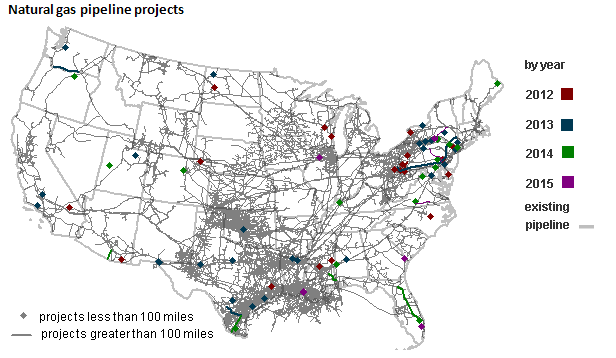Senators Barbara Boxer of California and Bernie Sanders of Vermont have introduced climate legislation that would impose a fee of $20 per ton of carbon or methane equivalent emitted. The
Climate Protection Act of 2013 provides measures designed to "address climate disruptions, reduce carbon pollution, enhance the use of clean energy, and promote resilience in the infrastructure of the United States". What does the Senate climate bill do -- and what are its chances of passage?
The centerpiece of the Climate Protection Act of 2013 is a fee imposed by the Administrator of the U.S. Environmental Protection Agency on carbon emissions. Starting in 2014, the carbon pollution fee would be $20 per ton of carbon dioxide or
equivalent. For the next 10 years, the fee would increase by 5.6
percent per year, after which it would hold steady at about $34 per ton.
The fee would apply to any manufacturer, producer, or importer of a carbon polluting substance, defined as coal (including lignite and peat), petroleum and any petroleum product, or natural gas that releases greenhouse gas emissions when combusted or used. The fee would apply whether the carbon polluting substance is produced in the U.S. or is imported. As designed, it would be an "upstream" fee, meaning only the first producer or importer of the substance would have to pay the fee directly; subsequent users would not be liable for the fee, although they would likely pay a higher price to acquire the fuel as the the upstream entity passes its costs along.
60% of the funds raised from the carbon pollution fee would be used to provide a monthly residential environmental rebate to legal residents of the United States. The remainder would be used to create a Pollution Reduction Trust Fund. The Trust Fund would be divided up for five purposes. $7.5 billion per year would go to the EPA to mitigate the economic impacts of the carbon pollution fee on energy-intensive and trade-exposed industries. $5 billion shall be available to the Department of Energy to carry out a Weatherization Assistance Program for Low-Income Persons. $1 billion would go to the Secretary of Labor for job training, education, and transition assistance for individuals employed by the fossil fuel industry. $2 billion will go to the Advanced Research Projects Agency-Energy program. The balance shall be used shall be used for federal budget deficit reduction, as would the entire Trust Fund after 2024.
To protect domestic industry against competitive harms caused by the carbon pollution fee, the Climate Protection Act of 2013 also includes a carbon equivalency fee on imports of carbon pollution-intensive goods. Those goods would include iron, steel, a steel mill product (including pipe and tube), aluminum, cement, glass (including flat, container, and specialty glass and fiberglass), pulp, paper, a chemical, or an industrial ceramic, as well as any other goods whose production is deemed to have similar carbon intensity.
Funds raised the carbon equivalency fee would be split between the EPA and the Department of Transportation. The EPA would use its share primarily to fund state and local programs that assist communities in adapting to climate change, improving the resiliency of critical infrastructure; and protecting environmental quality and wildlife. EPA could also use the funds to meet international commitments made by the United States to assist with climate change adaptation. The Department of Transportation's share would be used to fund state and local programs that assist communities in improving the resiliency of critical infrastructure and for projects that provide preferential parking for carpools, including the addition of electric vehicle charging stations.
Will the Climate Protection Act of 2013 pass? Congress has previously considered several structures to encourage a shift to lower-carbon energy resources, ranging from creating a national cap-and-trade market to a carbon tax. To date, none has passed, although individual states and regions have created cap-and-trade programs like the Regional Greenhouse Gas Initiative (RGGI) and the California Air Resources Board market.
President Obama called on Congress to address climate change and carbon emissions in his 2013 State of the Union address, and other jurisdictions such as the Canadian province of British Columbia have enacted a carbon tax. Could the carbon fee and dividend structure proposed in the Climate Protection Act of 2013 be the solution? At the least, it will provoke a national dialogue about carbon emissions and the federal government's role in managing them.



